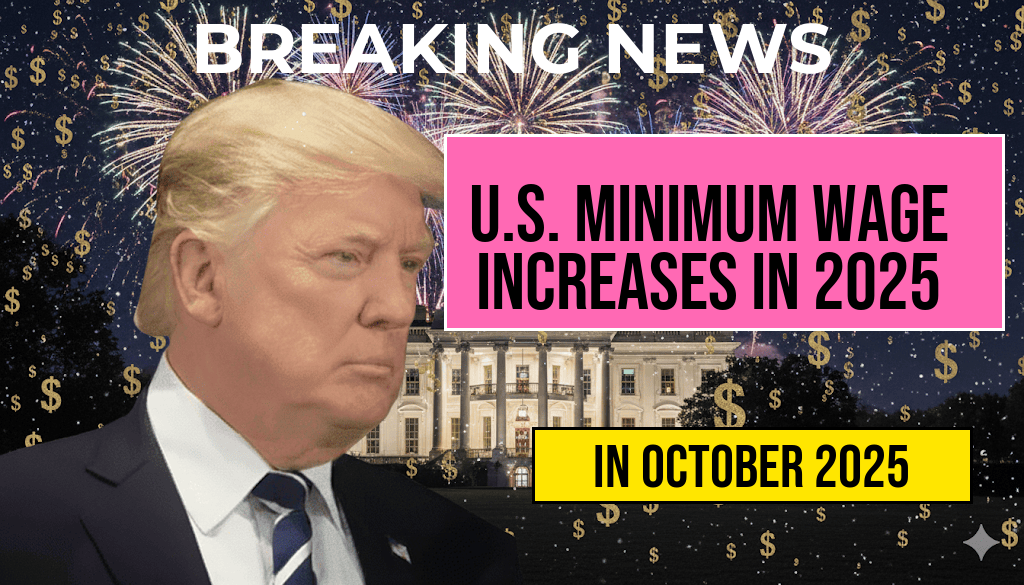The U.S. minimum wage is poised for a significant increase in 2025, as the Department of Labor has announced updated hourly pay rates effective October 4, 2023. This adjustment marks a pivotal moment for millions of American workers, as the federal minimum wage has remained stagnant at $7.25 per hour since 2009. The upcoming changes aim to address the rising cost of living and provide a more livable wage for low-income earners across the nation.
Details of the Minimum Wage Increase
The new minimum wage will rise incrementally, with the first adjustment scheduled for January 1, 2025. The changes are part of a broader initiative to enhance economic stability for workers in various sectors, particularly in industries heavily reliant on low-wage labor. The current proposal suggests an increase to $9.00 per hour in 2025, with subsequent annual increases planned through 2028.
Timeline for Changes
- October 4, 2023: Announcement of the new minimum wage rates.
- January 1, 2025: First increase to $9.00 per hour.
- Annual increases: Planned through 2028, depending on economic factors.
Impact on Workers and Economy
The increase in the minimum wage is expected to have widespread ramifications for both workers and the economy as a whole. Proponents of the wage hike argue that it is essential for reducing poverty and stimulating consumer spending. With more disposable income, low-wage workers can contribute more effectively to local economies, fostering growth and creating jobs.
However, critics of the increase warn that it may lead to unintended consequences, such as higher unemployment rates or increased automation in low-wage industries. Some small business owners express concerns about their ability to absorb the additional labor costs, which could result in reduced hiring or even layoffs.
Regional Variations and State Responses
While the federal minimum wage sets a baseline, many states and municipalities have opted to implement their own higher minimum wage rates. States like California and New York have already established minimum wages above $15.00 per hour, reflecting regional economic conditions and the cost of living. These local adjustments demonstrate a growing trend toward more aggressive wage policies at the state level.
State-Level Minimum Wage Examples
| State | Minimum Wage (2023) |
|---|---|
| California | $15.50 |
| New York | $15.00 |
| Texas | $7.25 |
| Florida | $11.00 |
Public Opinion and Legislative Support
Public sentiment surrounding the increase in minimum wage has seen a notable shift in recent years. According to a recent poll conducted by the Pew Research Center, approximately 67% of Americans support raising the federal minimum wage. This growing consensus is reflected in legislative efforts across various states, where lawmakers are increasingly advocating for higher pay standards.
Advocacy Groups and Economic Studies
Numerous advocacy groups, including the Fight for $15 movement, have played a crucial role in pushing for wage increases. Economic studies indicate that raising the minimum wage can lead to a reduction in employee turnover and increased productivity, factors that ultimately benefit employers. As the discussion around wage policy evolves, both sides of the debate continue to present data to support their positions.
Next Steps and Future Considerations
As the implementation date for the minimum wage increase approaches, stakeholders from various sectors will need to prepare for the changes. Businesses may need to reassess their payroll structures and pricing strategies, while workers should stay informed about their rights and potential benefits from the increase. The ongoing dialogue regarding minimum wage policies is likely to remain a focal point in national economic discussions well into the future.
For more information on the minimum wage and its implications, you can visit the U.S. Department of Labor or review the Wikipedia entry on minimum wage.
Frequently Asked Questions
What is the new minimum wage rate set for 2025?
The new minimum wage rate will be established at $15 per hour, effective October 4, 2025.
When will the minimum wage increase take effect?
The minimum wage increase will take effect on October 4, 2025.
How does the minimum wage increase affect workers?
The minimum wage increase will provide higher earnings for workers, helping to improve their financial stability and purchasing power.
Are there any exceptions to the new minimum wage rate?
Yes, certain industries and specific employee categories, such as tipped workers, may have different regulations regarding the minimum wage.
How often is the minimum wage reviewed and adjusted?
The minimum wage is typically reviewed and adjusted periodically, often in response to inflation and economic conditions, though specific timelines may vary by state.

Leave a Reply